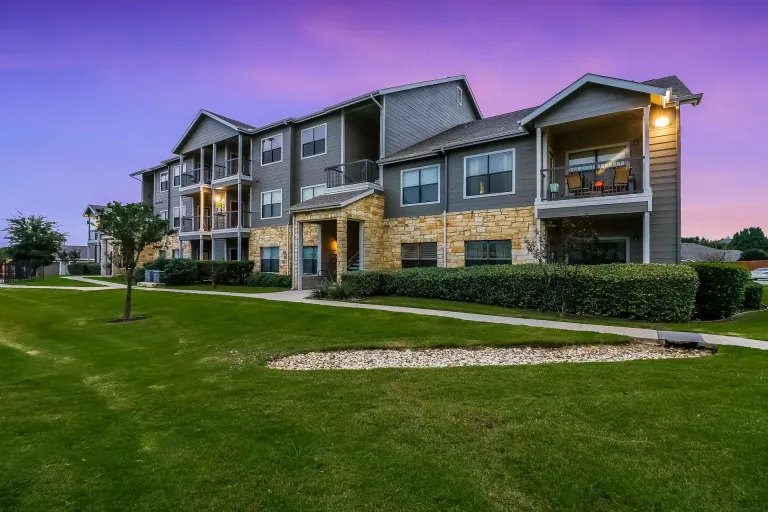People assume multifamily is an inflationary hedge because, as units roll, rents can be increased accordingly. While that’s true, it’s also an oversimplification. In reality, owners’ costs are also increasing. Owners must strike a delicate balance between increasing rents and controlling costs in order to truly maximize a portfolio’s value.
“While multifamily does have the potential to outperform in an inflationary environment, it can also really test operators in the sense that the best operators will be able to utilize local and industry knowledge and connections to control expenses, while measuring those expenses against the rent increases that may be captured in the market, all of which will allow strong operators to keep a healthy margin at their properties” – Daniel Farber, CEO at HLC Equity
In this article, we explore six tangible ways for multifamily owners to maximize the value of their portfolios as inflation rises.
- Link rent increases to changes in the CPI.
One benefit to owning multifamily properties during periods of high inflation is that units tend to turn over annually, and with each lease expiration, the rent can be renegotiated. Theoretically, this allows owners to at least keep pace with inflation.To prevent tenants’ sticker shock, leases can be re-written with a clause that stipulates further rent increases will be tied to at least any increase in the annual Consumer Price Index (CPI), the standard gauge of inflation. In recent years, CPI increases have been a modest 1-3 percent, but today, the rate of inflation is rising at a staggering 7-8 percent. These rent increases will be critical for boosting NOI and keeping pace with inevitably higher operational costs.
At the same time, owners should be sure to monitor their prices on an ongoing basis to ensure they’re in line with market rates and not falling behind their competitors. There are many software programs that owners can utilize to assist with their pricing and other revenue management strategies.
- Bid out and/or renegotiate existing vendor contracts.
All too often, an owner will default to using the vendors that either a) were inherited from the previous ownership; or b) with whom they already have a long-term, preexisting relationship. Owners who utilize this approach often lose touch with the “going rate” for those services and may have no idea that they are leaving money on the table.First, for any new contract, that contract should be bid out 2-4 separate vendors. This creates a healthy amount of competition and ensures that the owner is getting the best rate for that level of service.
Moreover, in the case of existing vendor contracts, the management team should review each contract and determine whether they could be renegotiated to secure better rates or terms given current market considerations. Owners with substantial holdings can often renegotiate better rates if allowing vendors to bid on a portfolio of properties rather than having different vendors service each individual asset.
To be sure, depending on the market, labor shortages often mean that owners have little room to negotiate beyond a certain point. Trying to squeeze a vendor too far may ultimately backfire, and may strain otherwise strong, long-term relationships. As always, owners need to use good judgment to strike a balance in this regard.
- Leverage bulk purchasing to get ahead of supply chain issues.
One of the primary causes of today’s growing inflation stems from ongoing supply chain issues. Certain goods simply cannot be produced fast enough to keep pace with demand, and as a result, prices for those goods are rising.While this has impacted all industries, the commercial real estate industry has been hit particularly hard. The cost of building supplies and materials has skyrocketed. For example, the price of lumber has increased 37% over the past two years. According to the National Association of Homebuilders, more than 90% of builders reported delays and material shortages last year.
One way for multifamily owners to mitigate the impact of these shortages is to leverage bulk purchasing opportunities. Owners can expand their inventory of difficult to obtain and/or expensive items, such as appliances, to ensure they have these on-hand as needed, whether needed for standard replacement or as part of a unit’s larger value-add overhaul.
- Consider implementing a RUBS system.
Utility income is an often overlooked source of income for multifamily owners. If a building is not already individually metered, an owner should evaluate the feasibility of doing so. This would allow the owner to shift some of that cost burden to tenants, something that becomes more valuable as utility costs rise. Submetering can be done for water, gas, and electricity.Alternatively, an owner may consider implementing what’s known as a “RUBS” system – or “ratio utility billing system”. Rather than individually metering each unit, the landlord can instead bill each unit for their “fair share” of the building’s utilities. A unit’s pro rata share if often based on the size of the unit, number of bedrooms in the unit, number of tenants occupying the unit, or some combination thereof.
Owners who utilize a RUBS system can maximize the value of this strategy further by entering into long-term, fixed-rate agreements with utility providers. Many electricity companies are still offering historically low pricing for those willing to make a long-term commitment with that provider.
- Evaluate whether some units can be better utilized as mid-term rentals.
At larger multifamily properties, there may be an opportunity to maximize revenue by converting a small portion (e.g., 5-10 percent) of units from standard, year-long rentals to mid-term rentals. Mid-term rentals will usually lease on a 3- to 6-month basis and appeal to contract workers, traveling nurses, “digital nomads,” early retirees and more.Mid-term rentals generally need to be furnished and may have higher operational costs, but on per-night basis, have the potential to generate significantly higher income. A platform like Layers can help streamline the operations associated with mid-term rentals.
- Carefully consider CapEx spending.
Although the funds may have already been set aside for capital expenditures, it is worth evaluating whether now is the right time to make those investments.
When evaluating whether and how much to invest in capital projects, be sure to consider the following: pausing value-add investments may be a double-edged sword because the cost of goods and services continues to rise. Delaying an expense today may ultimately cost more than if you were to make those investments in the future. That said, some properties may be able to pause value-add renovations if they are otherwise achieving strong, organic rent growth without making those planned improvements.In some cases, a middle-ground approach might make sense. There may be opportunities to value-engineer savings, such as replacing furniture cushions rather than replacing furniture entirely. In any event, owners will want to actively prioritize their capital spending. Discern what’s really necessary, what’s discretionary, and then determine whether some projects should be shelved until the capital environment improves.
Multifamily owners and investors are keen to remember that all real estate is cyclical. We are in an upswing right now, but how long that upswing lasts is anyone’s (albeit educated) guess. Savvy real estate owners should strive to maximize revenues and control costs—a balance that will best position them for when the next downturn inevitably occurs.
Interested in learning more about how HLC Equity maximizes the value of its investments? Watch our webinar here


